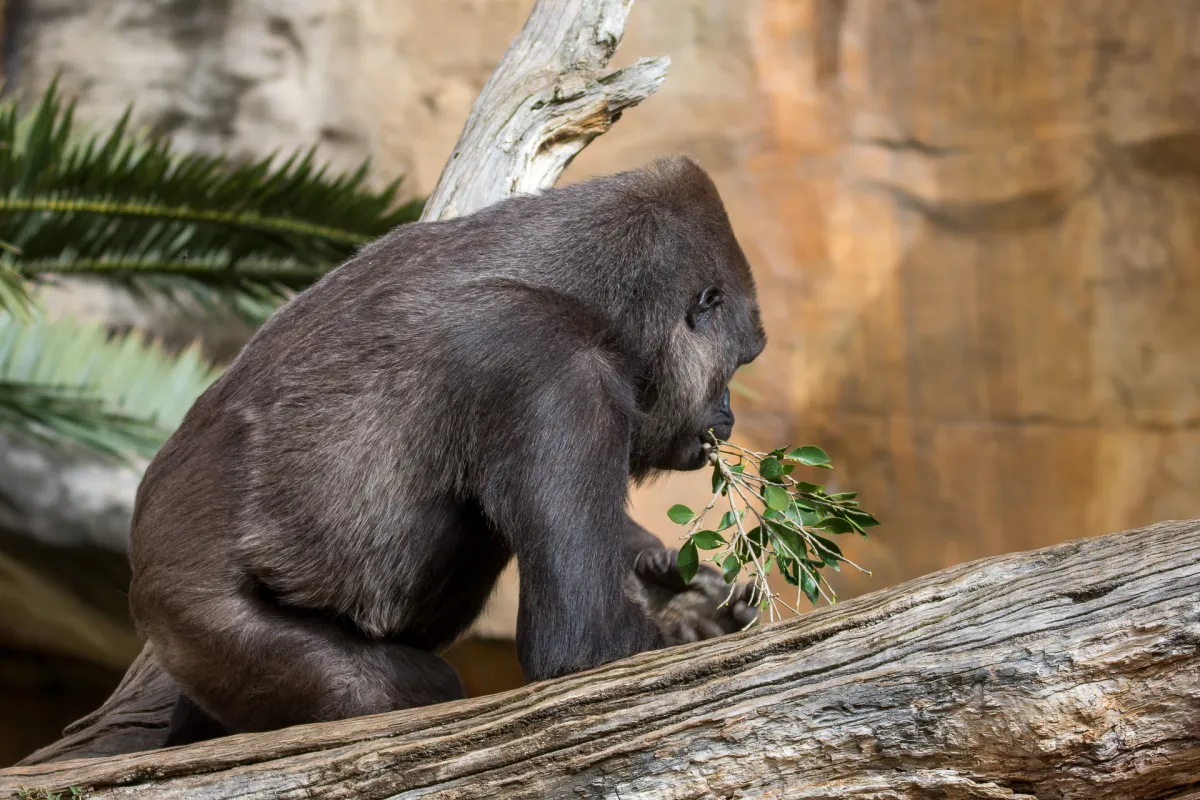In the heart of the dense rainforests of Central Africa dwells a majestic and enigmatic creature, the Western Lowland Gorilla, Gorilla gorilla gorilla. These gentle giants are one of the two subspecies of the Western gorilla and are an integral part of the rich biodiversity of their habitat.
Habitat and Distribution
Western Lowland Gorillas primarily inhabit the lowland tropical forests and swamps of Central Africa, including countries like Cameroon, Central African Republic, Gabon, Congo, and Equatorial Guinea. They are highly adaptable and can also be found in secondary forests and clearings within their range.

Physical Characteristics
Although the western lowland gorilla is the smallest subspecies of gorilla, it still has exceptional size and strength, with adult males often weighing up to 600 pounds (270 kg) and standing around 5 to 6 feet tall when upright. Their distinctive features include a broad chest, large hands and feet, and a prominent sagittal crest on their skull, which is more pronounced in males. Western Lowland Gorillas have a coarse, black coat that provides protection from the elements of their forest home.

Social Structure
Western Lowland Gorillas live in cohesive groups called troops or bands, typically consisting of one dominant silverback male, several adult females, their offspring, and sometimes non-dominant males. The silverback is the undisputed leader of the group, responsible for protecting its members and maintaining order within the troop. They communicate through a variety of vocalizations, body language, and facial expressions, displaying complex social behaviors and bonds.
This young chappie was born at the Bioparc in Fuengirola in November 2020.

Diet and Foraging
Their diet primarily consists of fruits, leaves, shoots, and occasionally insects. Western Lowland Gorillas are primarily herbivorous but occasionally supplement their diet with small invertebrates. They are crucial for seed dispersal in the forest, playing a vital role in the ecosystem’s health and regeneration.

Conservation Status
Despite their cultural and ecological significance, Western Lowland Gorillas face numerous threats, including habitat loss due to deforestation, poaching for bushmeat and the illegal pet trade, and infectious diseases like Ebola. As a result, they are listed as critically endangered by the International Union for Conservation of Nature (IUCN). Conservation efforts, including habitat protection, anti-poaching measures, and community education, are crucial for their survival.
Ecotourism and Research
Ecotourism has emerged as a sustainable means of generating revenue for conservation while providing opportunities for responsible wildlife viewing. Sanctuaries and national parks offer visitors a chance to observe these magnificent creatures in their natural habitat while contributing to their protection. Furthermore, ongoing research efforts aim to better understand their behaviour, ecology, and genetics, providing valuable insights for conservation strategies.